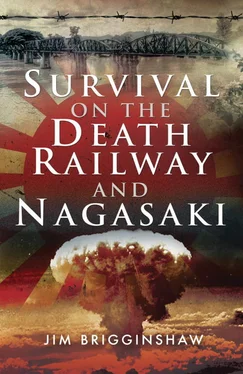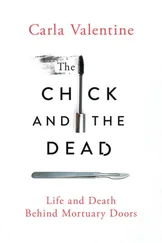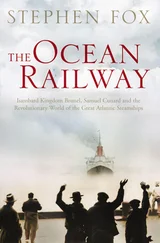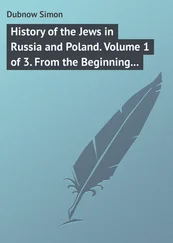The work party knew he was having the bloke on, and stood by grinning.
Jimmy looked at the tiny lifeless body in his hand. ‘You’re right’, he said, placing it gently on the ground. ‘A man can’t be that bloody hungry.’
He hadn’t walked two paces from the dead bird before someone grabbed it and ate it raw.
Sparrows and most other creatures were fair game, although hard to find. Greens were just as scarce, and grass and the fleshy cabbage-like leaves from the tops of coconut palms served as vegetables. Obtaining the coconut cabbage was the most risky undertaking. The tree had to be cut down, and that brought the worst punishment if anyone was caught in the act.
The prisoners, desperate for greens, asked the Japanese for plants to start a vegetable garden inside the jail. The Japanese surprised them by providing not only plants, but a bag of blood-and-bone fertiliser.
Sol Heffernan and Jim Bodero opened the bag.
Sol smelt it. ‘Hey, that’s not too bad.’
Jim had a sniff. ‘Smells like shit.’
‘Says on the bag it’s blood and bone. Blood comes from animals, so does bone. And animals are food, ain’t they?’
‘Still smells like shit.’
‘Well, I say it’s tucker. And we’re not going to waste tucker on a bloody garden.’
‘What do you reckon we do with it?’
‘We eat it’, Sol said.
‘We can’t eat fertiliser.’
‘Not straight out of the bag. We’ll make fertiliser rissoles.’
Sol emptied the contents out of the bag, added water, patted the mixture into small, round rissoles and cooked them on the open fire. He took the first bite.
‘What’s it like?’ Jim asked.
Sol stopped trying to chew. ‘If ever I get home, never again will I criticise the missus’s cooking.’
Sol never made it home. Married a few weeks before he embarked for Malaya, he didn’t get the chance to sample his wife’s cooking again. He was drowned with hundreds of other prisoners off the Philippines in 1944 when an American submarine sank the ship carrying them to Japan to work as slaves. But that was to happen much later. Now, as they tested their tortured digestion with fertiliser rissoles, they couldn’t have imagined what lay ahead of them.
The garden did pretty well without fertiliser, but the prisoners were never to taste what it grew. It was looking promising when the Japanese suddenly announced that they wanted a workforce to go to Burma.
‘Much better in Burma’, they told the prisoners. ‘Plenty food, plenty medicine.’ They even hinted that the men might be repatriated in exchange for Japanese prisoners of war.
The Australians had been in Changi from the end of February 1942 to the beginning of May. Deciding that nothing could be much worse, many of the men were ready to volunteer to go to Burma, but they weren’t given the chance-they were detailed to go by their officers.
In the A-Force detachment, Jim and Snowy Baker were with nearly a thousand others, including Peter Murphy, Jimmy Harris, Johnny Gorman, Dickie Barnes and Sol Heffernan.
Johnny Gorman, a dusky South Sea islander, lived at Mackay in north Queensland. The first Japanese he met as a prisoner of war poked a finger in his chest and asked, ‘Who you?’
‘I’m an Aussie’, Johnny told him proudly.
‘No, no’, the Jap said. Australian white, not black.’
Johnny was to come up against this throughout his imprisonment. The Japanese had trouble understanding that black people could be Australians.
Johnny was among those who lost their lives towards the end of 1944 when the ship taking prisoners to Japan was torpedoed.
Dickie Barnes, a corporal and section leader, was more than sixty years of age. He was a First World War veteran who carried a souvenir of the war, a huge hole in his right buttock from a machine-gun burst. How he came to be in the Second AIF at his age was a mystery, because the maximum enlistment age at the time was thirty-nine.
Dickie had spent most of his life working on sheep stations in outback Queensland. The day he enlisted, he kicked the last sheep down the race and said, ‘I hope I never see another of you woolly bastards in my lifetime.’
He was to see many more of them, however, because Dickie survived the war and returned to the outback sheep stations.
Based on his experiences in two wars, he didn’t think much of the Second AIF compared with the Light Horse he’d served with in Palestine in the First World War. In comparison, the new breed of soldier was a Girl Guide, Dickie said.
He was on his way to Malaya with the Second AIF when the troopship called in for a stopover at Fremantle. During shore leave, Dickie’s mates waited outside while he went into a well-known house in Rose Street. He was in there so long that they started to worry.
‘He’s only a little bloke’, Snowy Baker said. ‘He might have fallen in.’
When Dickie finally appeared, the others wanted to know what had kept him.
He looked embarrassed. ‘I had trouble… you know… performing.’
‘Haw, haw’, Sol Heffernan roared. ‘You couldn’t get it up!’
‘She was very helpful’, Dickie said sadly, ‘but it was mission impossible.’
‘Maybe you should join the Girl Guides’, Sol told him.
CHAPTER FOUR
MELBOURNE CUP 1942
THE men who were being sent to Burma and thought conditions couldn’t be much worse than those in Changi found how wrong they were before they even arrived. Five hundred men, half of A-Force, were crowded into the hold of an ancient Japanese transport ship, the Toyahashi Maru . The other five hundred had boarded another ship.
The Toyahashi Maru , which was so badly rusted that a finger could be poked through its side, had been used to carry cavalry horses from Japan to Burma. The ship’s hold was now covered in their dung.
The five hundred men were packed into the hold so tightly they could only stand or squat. Lying down was an impossibility. Bladders and bowels had to be evacuated where they stood. It was unbearably hot and the stench was overpowering. Within days, sweat swished around the hold, mixing with horse manure and human faeces and urine.
The daily ration was a small portion of cooked rice and a cup of water.
One day, a Japanese sailor emptied a couple of cornsacks of tiny bread rolls into the hold. Rock hard and close to six weeks old, they were blue with mildew and covered in a hairy fungus. Even so, the desperately hungry men fought over them.
When the prisoners started to collapse and die in the stifling, stinking hold, the Australian officers were able to persuade the Japanese to allow a few on deck at a time, but they barely had enough time to fill their lungs with fresh air before they were forced back down into the hellhole.
The brief time on deck was used by some of the prisoners to sabotage the ship’s gun. They took out the breech block and threw it overboard, knowing that the ship was now defenceless and any attack could have disastrous consequences for them. However, they figured it would be worth it just to see the Japanese trying to use the gun.
The Toyahashi Maru was at sea for three days before it reached its first port of call, Sumatra. It stayed there for a day refuelling, but the suffering prisoners remained locked in the hold. After what for them seemed an interminable time, the ship finally sailed again and was at sea for another three days before arriving at Victoria Point in lower Burma, where two hundred prisoners were taken off.
The ship then sailed further north to Mergui. Another two hundred were disembarked there, Jim Bodero and his mates among them.
Mergui was upriver, where it was too shallow for the Toyahashi Maru , so the ship anchored at the mouth of the river, far from the town. After unloading its suffering human cargo, the ship headed north to Tavoy with the remainder of A-Force, including Colonel Ramsay, who had been in overall charge. Those left at Mergui and Victoria Point were placed under the command of officers of lesser rank.
Читать дальше












